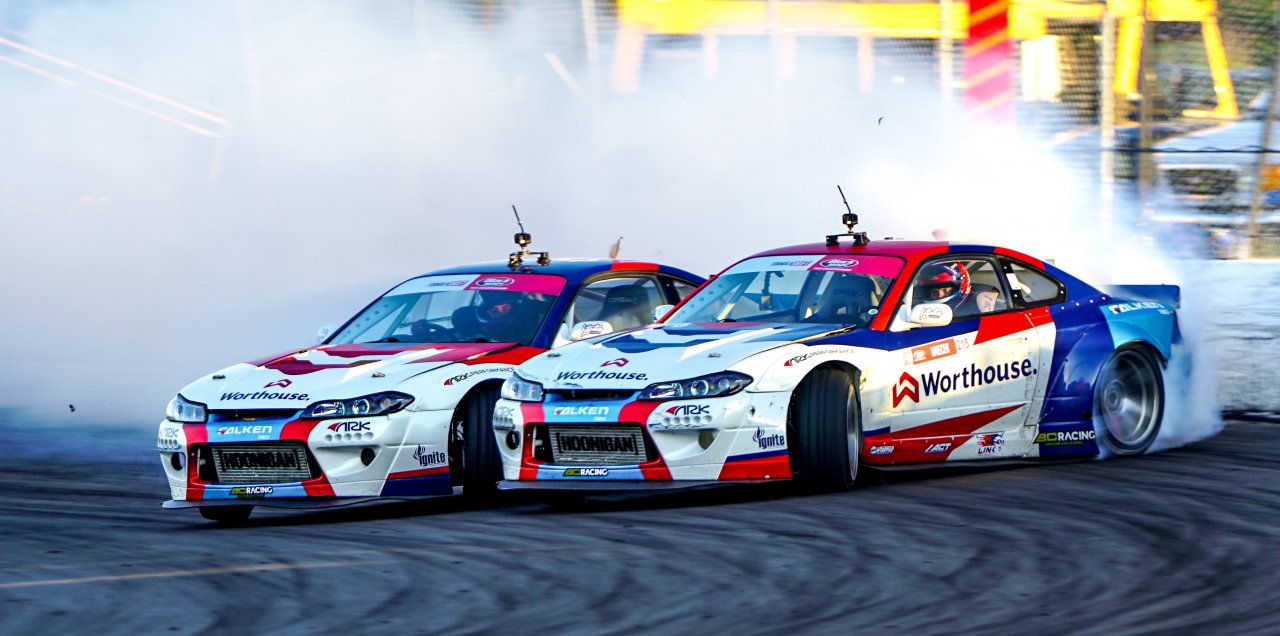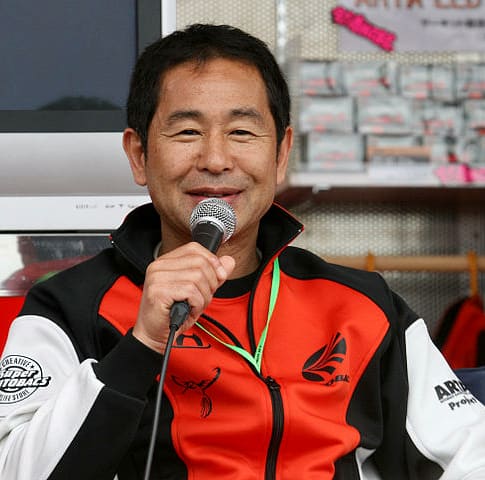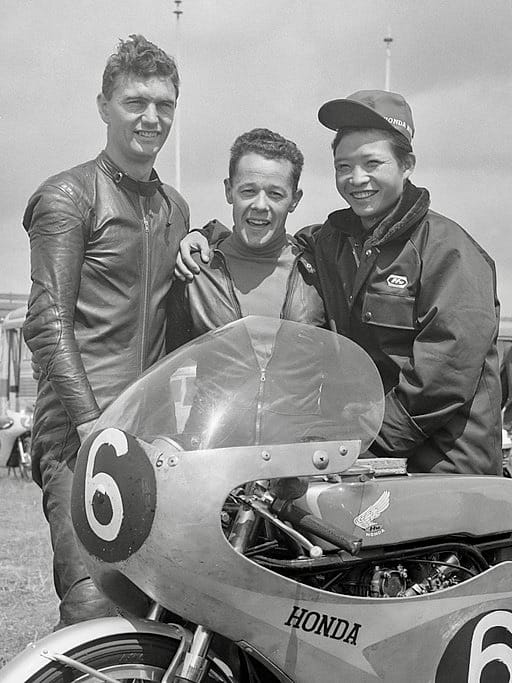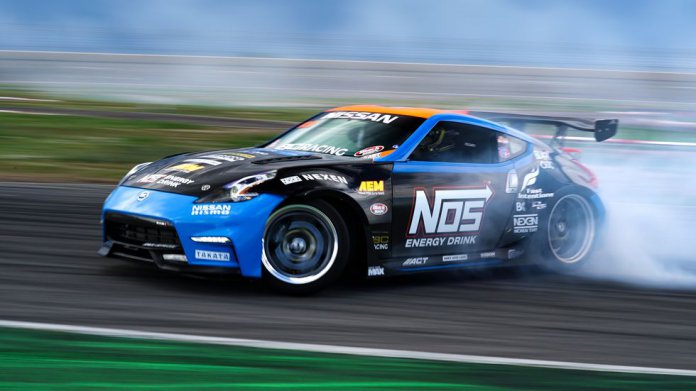(Editor’s note: During the month of January, the ClassicCars.comJournal presents a series of stories related to and perhaps explaining the recent increase in interest in collecting cars produced by Japan-based automakers.)
In the last 15 years, the rise of a new motorsport has captured young hearts while creating its own lifestyle and culture around the world. Drifting is an international FIA-sanctioned motorsport originating from Japan that has created a new and growing segment to our evolving car culture.
Drifting is a driving technique in which the driver purposely forces the car to lose traction, typically by “clutch kicking,” and then oversteers and or countersteers to make their way through a corner with the car angled sideways as much as possible. The technique essentially requires the driver to countersteer to offset momentum to direct the vehicle into the direction of the turn.


Keiichi Tsuchiha 
Kunimitsu Takahashi (right)
Kunimitsu Takahashi, a former professional motorcycle road racer, was considered the “father of drifting” as early as the 1970s. He was able to use his driving techniques to win several championships in the All-Japan Touring Car Championship. He was also the first Japanese rider to win a World Grand Prix motorcycle race.
Another early “Drift King” was Keiichi Tsuchiya, a two-time 24-Hours of Le Mans winner known for using drifting techniques in non-drifting motorsports and, in his free time, while traveling on the mountain roads of Japan.
As one of the leaders in popularizing drifting by founding the world’s first organized drifting competition, called the D1 Grand Prix, Tsuchiya not only helped spread the word about drifting but also the love for the Toyota AE86. Driving a Toyota AE86 Sprinter, Trueno, Tsuchiya was also known for “touge” (mountain roads) racing in it. Since then, the AE86 has become a Japanese collector car with direct pop culture ties as well to the popular anime Initial D, with Tsuchiya acting as a consultant.
Drifting really didn’t really emerge forcefully in the United States until the first season of Formula Drift in 2004, and in 2006 when it was highlighted in the movie The Fast and the Furious: Tokyo Drift. Tsuchiya also consulted for the film as a stunt coordinator and stuntman while making his own cameo appearance on the screen.
However, in 1996 at Willow Springs Raceway in California, one of the earliest drift events outside of Japan was hosted by the Japanese magazine Option. Founder of the Japanese D1 Grand Prix Daijiro Inada, NHRA Funny Car drag racer Kenji Okazaki, and Keiichi Tsuchiya were showcased by giving demonstrations in a Nissan 180SX brought over from Japan. Since then, sanctioned competitions have evolved into permanent motorsports series.

Competitive drifting is a judged motorsports competition focused primarily on the ability of the driver to navigate the course with specified acceleration, deceleration, and zones to be filled as well as their ability to “chase” or follow a lead driver in extremely close proximity. Over the years, the expectations of the driver have evolved along with the rule book that is shared internationally between different sanctioned drifting series.
Popularity of the sport brought in bigger-name drivers, like Tanner Foust and Vaughn Gittin Jr., which led to the increase in interest in the chassis used in drifting. Unlike many other motorsports, drifting does not have rules about which chassis and engines a driver has to run, as long as the rear subframe is factory and the car passes their tech. This allowed drivers to be more creative with their presence on the track.

Rear-wheel drive cars were the most popular chassis of choice for drivers, specifically Japanese rear-wheel drive chassis. The Nissan Silvia 240SX became one of the top picks, having won seven D1 Grand Prix championships, and has a very extensive aftermarket product availability for added performance specific to drifting. As the popularity of the 240SX rose, the rarity of an all-original and low-mileage example has become difficult to find, and thus more expensive for collecting.
The same could be said for the Mazda RX-7, Nissan Skyline, Nissan 350Z, and Toyota Supra that were all featured in the anime series and Japanese manga Initial D and are all currently competitive chassis used at the PRO level of Formula Drift.
Most recently, drifting has made appearances in many films like Baby Driver, Cars, and the Netflix television series Hyperdrive as well as computer and console gaming like Gran Turismo, Forza Motorsport, the Need for Speed franchise and even indie games like Absolute Drift.
There has also been a rise in social media celebrities sharing content related to drifting, from driving to building drift cars. There’s even a series of drifting-oriented lifestyle events under the Gridlife banner taking place.

As the sport grows and its audience has money to spend, one of the places it is spending is on collectible drift-style vehicles.
Lately, the Lexus IS300 has been the hottest on the drift enthusiast’s radar, although also being sought are the BMW E36 and specific components from the popular 2JZ Toyota Supra engine.
Find yourself a clean example of an early 2000 model IS300 with a factory 5-speed manual transmission and you’ll have a unicorn on your hands, and in your collection.




Those who love classic cars must know they run on gasoline fuel. Yet, here in 2021 United States, we supposedly elected a President and Congress that hates gasoline and loves so called electric vehicles. This poses the question for ClassicCars.com and those who love classic’s in this: Some estimates claim the gasoline engine will be phased out as early as 2030 and although this may mean only NEW cars built after that would be electric cars, the transformation to electric cars will cause a ripple effect. Fewer gas stations, mechanics, parts availability in the long run and basically a debacle in the value of a classic car that can no longer be fueled.
Perhaps it is time to beginning the support of sustaining the gasoline engine and petroleum industry as a whole and stopping the insane and hypocritical nature of so-called electric vehicles. After all, who would invest $30K in a car they could no longer fuel? Scary stuff to say the least.